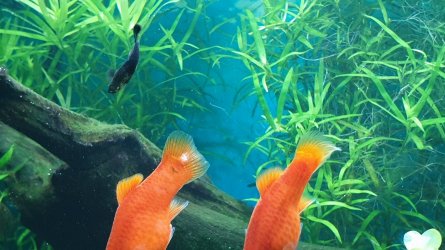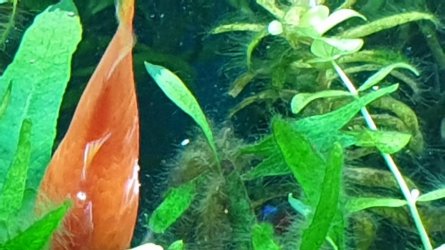poseidone
Moved On
Hi All,
I am a Italian and i am sorry for grammatical horrors...I am a newbie and I do have a 200 litres tank...and every time I got a challenge...i had snails (sorted )...i had seed shrimps aka ostracod ( sorted problem and on this i am actually become quiet good )...but now i got a big problem which i can't figure it out on my own...well are fews...but lets start with the one which i am feel guilty as i am unable to sort it out...is affecting the whole tank...as i saw nearly the all species ( 4 Bettas, 2 Corydoras, 2 Guppies,4 Tetras all being affected...but the most are Platies which i will upload some pics...with exclusion of 4 Dwarf chain loaches and 2 Borneo suckers ( the last 2 so far never seen them do it ).
)...but now i got a big problem which i can't figure it out on my own...well are fews...but lets start with the one which i am feel guilty as i am unable to sort it out...is affecting the whole tank...as i saw nearly the all species ( 4 Bettas, 2 Corydoras, 2 Guppies,4 Tetras all being affected...but the most are Platies which i will upload some pics...with exclusion of 4 Dwarf chain loaches and 2 Borneo suckers ( the last 2 so far never seen them do it ).
My poor Platies ( are 5 in total, 2 Adults and 3 little cuties which they born in my previous 64 lt tank ) are often "scratching" on whatever they got nearby...the adults one of them is still scratching but without abrasions the other one scratching and with abrasions. From time to time those abrasions are in different parts of the body. They start with a sort of discoloured tissue and then like from night time to the day time they become like serious injuries in white colour like part of the skin is fallen off and right now i saw that even one of the little cuties got 2 of those kind of stains on the body. I noticed also that the consistency of the poo has changed in white colour and stringy for the little ones ...while for the adults is alternating from normal to stringy white.
I took back to the shop a male Molly 4-5 weeks ago as he was visibly a bully and i thought that was the main cause ( stress for the others ).
i did use Interpet anti fungus and internal bacteria...last month... i do regular water changings and all water parameters are fine ( ammonia 0 , nitrite 0 etc. etc.
5 days ago all fishes they was gasping on the surface with exclusions of Bettas and Corydoras and because those "scratchings" i thought that was Ich, so i start to use Api white spot cure which in 5 minutes seems to work as the fishes they start to swim normally but now after 5 days they are still "scratching " and one of the Platies got this big white sort of ulcer on his body. Can be anchor worm? I am desperate and i don't like at all to use all those chemicals to be honest .
Please help me
Regards Alessio
I am a Italian and i am sorry for grammatical horrors...I am a newbie and I do have a 200 litres tank...and every time I got a challenge...i had snails (sorted )...i had seed shrimps aka ostracod ( sorted problem and on this i am actually become quiet good
My poor Platies ( are 5 in total, 2 Adults and 3 little cuties which they born in my previous 64 lt tank ) are often "scratching" on whatever they got nearby...the adults one of them is still scratching but without abrasions the other one scratching and with abrasions. From time to time those abrasions are in different parts of the body. They start with a sort of discoloured tissue and then like from night time to the day time they become like serious injuries in white colour like part of the skin is fallen off and right now i saw that even one of the little cuties got 2 of those kind of stains on the body. I noticed also that the consistency of the poo has changed in white colour and stringy for the little ones ...while for the adults is alternating from normal to stringy white.
I took back to the shop a male Molly 4-5 weeks ago as he was visibly a bully and i thought that was the main cause ( stress for the others ).
i did use Interpet anti fungus and internal bacteria...last month... i do regular water changings and all water parameters are fine ( ammonia 0 , nitrite 0 etc. etc.
5 days ago all fishes they was gasping on the surface with exclusions of Bettas and Corydoras and because those "scratchings" i thought that was Ich, so i start to use Api white spot cure which in 5 minutes seems to work as the fishes they start to swim normally but now after 5 days they are still "scratching " and one of the Platies got this big white sort of ulcer on his body. Can be anchor worm? I am desperate and i don't like at all to use all those chemicals to be honest .
Please help me
Regards Alessio




